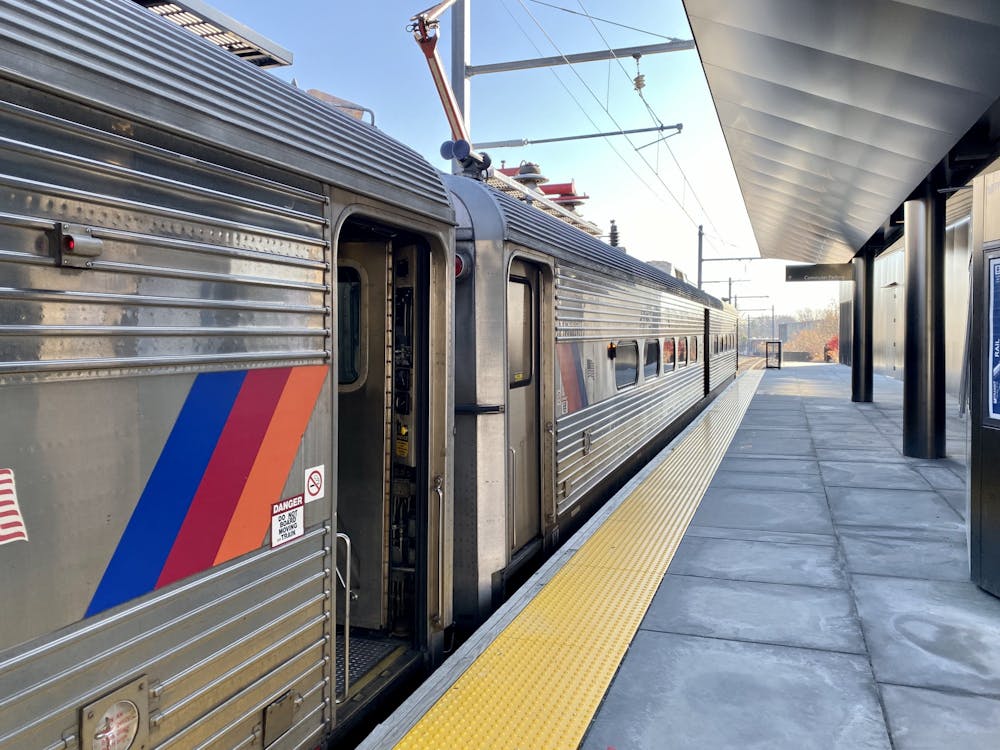The Princeton Dinky, the shortest scheduled commuter rail line in the nation, might have its days numbered. NJ Transit recently commenced a year-long study of the Princeton transit system, with an emphasis on the Princeton Branch transit corridor that unites Princeton with Princeton Junction.
The study’s ultimate objective is to examine potential alternatives for the weathered Dinky in accordance with the transit system’s future population demand and certain planned developments, including the expansion of the University’s campus. In addition to these considerations, emergent modes of transportation are constantly changing the way many people imagine travel.
According to NJ Transit, the avenues for alternative transportation currently under consideration include “a roadway with embedded rail that can support rail and rubber-tired transit vehicles; a stand-alone rail corridor with a parallel roadway for rubber-tired tram and/or bus service” and “a roadway with a guideway that could support a rubber-tired tram and buses.”
Another option, also outlined in the NJ Transit study’s plans, extends the possibility of the Dinky ultimately remaining a fixture of Princeton transit: “A no-build option that continues to use the existing Arrow III cars or similar rail vehicle.”
However, this latter possibility seems unlikely to some involved in the decision-making process because of the desire to implement transit technology that is more accessible and of higher quality than the current Dinky.
Chair of the Princeton Transit Advisory Committee Nat Bottigheimer is optimistic about NJ Transit’s push toward updating the mode of transport along the Princeton Branch.
“NJ Transit has made clear that the current Dinky railcars need to be replaced by another type of railcar or transit service. Even if changes are only to the equipment, it can not help but be more contemporary in technology, since the Dinky railcars date back to 1978,” he wrote in an email to The Daily Princetonian.
Regardless of the study’s outcome, the alternative will seek to enhance the quality and frequency of transit along the Princeton Branch.

“Any future service that is more frequent; has more stops; is more accessible by walk and bike; is integrated with University and community transit systems; and better connects to downtown Princeton will be novel and an improvement, whether future transit vehicles have rubber tires, steel wheels, magnetic cushions, or something else,” Bottigheimer wrote.
Moreover, Bottigheimer notes that the University will play a crucial role in determining how successfully the transit system will function along the Princeton Branch and that its assets render it uniquely equipped to “not only meet its own sustainability objectives, but to support the sustainable transportation strategies of its neighbors.”
“If the University organizes future growth along the transitway, a high-frequency transit service that stops at key points will be a critical asset in helping Princeton University meet its greenhouse gas reduction goals; creating a walkable, bike-able, and sustainable island in the center of a car-oriented sea; and creating the kind of environment where strategic partnerships with private sector partners can flourish, because employees may want to live there,” Bottigheimer wrote.
Despite discussions concerning a forthcoming transit system in which the Dinky becomes relegated or removed as the primary mode of transport along the Princeton Branch corridor, groups like “Save the Princeton Dinky” have consistently sought to ensure the long-term preservation of the Dinky. In recent years, the group has organized against efforts to retire the Dinky and have spearheaded Change.org petitions to accrue support for maintaining it in the face of other transit proposals.

For now, the local community must wait in anticipation of the NJ Transit study’s final verdict on the Dinky’s role in the Princeton transit system.








